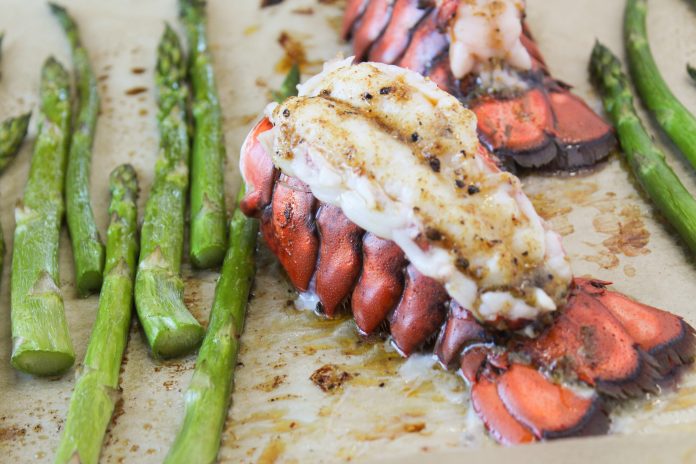By Taylor Sutton, MS, RD
United Supermarkets’ Lifestyle Desk
Heart health is one of the most talked-about health topics in America. According to the American Heart Association, someone in the United States has a heart attack every 40 seconds. Can we agree that this happens far too often?
Heart attacks are just one of the many heart conditions that can occur. Others include: arrhythmia, cardiac arrest, heart murmurs, peripheral artery disease, and so on.
So, let’s explore what we mean when we talk about heart health. Your heart is the primary organ of your circulatory system. Its job is to pump blood all throughout the body, which, as you can imagine, is a huge job! Without a functioning heart, the body can not receive the amounts of blood needed to function properly.
Blood carries many important things throughout our body, such as: oxygen, vitamins, minerals, fats, sugars, proteins, trace-minerals, and hormones. When blood is not circulated well due to heart complications, the body can not perform its basic functions. With that being said, let us look at 10 food choices that support heart-health.
1. Whole grains: provide fiber to support circulation and minerals to support the immune system and blood production. Whole grains can reduce cholesterol, triglycerides, and insulin levels.
2. Vegetables: include fiber, vitamin, minerals, and trace minerals. All of these properties support the bodies everyday functions such as brain function, muscle activation, and blood circulation.
3. Fruits: like vegetables, fruits contain fiber, minerals, trace minerals, and vitamins and antioxidant properties.
4. Nuts and seeds: have protein, fiber, plant sterols (helps lower cholesterol), L-arginine (supports use of protein in the body), and fats such as unsaturated fats and omega-3 fatty acids. Omega-3 fatty acids reduce the risk of stroke and heart attacks.
5. Beans: are packed with protein and fiber! Whether they are canned, dried, or frozen, they provide many nutrients that support your blood sugar, digestion and brain health. When choosing canned beans, choose the can that states on the label “low-sodium” or “no added sodium”. You can also rinse the canned beans twice which removes up to 40% of added sodium.
6. Low fat/fat free dairy foods: can promote weight loss and weight management which often leads to lower blood pressure and cholesterol levels. Maintaining adequate blood pressure and cholesterol levels helps support the health of your heart and helps it do its job in the best way possible!
7. Poultry: turkey, chicken, duck, geese, quail, and guinea fowl are all commonly consumed types of poultry. Poultry is considered a lean source of animal protein. This is due to the unsaturated fat content that provides a more balanced amount of cholesterol.
8. Fish: fish such as salmon, snapper, flounder, trout, and tuna provide high amounts of omega-3 fatty acids. These unsaturated fatty acids promote brain health and support adequate levels of cholesterol and triglycerides.
9. Fats and oils: adding fats and oils to your food is not only a flavor-enhancer, but it’s a quick way to add necessary nutrients to your food such as essential fats and calories. There are many kinds of oils, such as cotton seed oil, sunflower oil, olive oil, canola oil, vegetables oil, peanut oil, avocado oil, coconut oil, the list goes on! Each oil provides different benefits based on the nutrients, the type of fats (trans fat, saturated fat, or unsaturated fat), and the amount of fat that it contains.
10. Low sodium foods: choosing low sodium foods can be beneficial for decreasing blood pressure levels. This alone will reduce the risk of cardiovascular disease, heart attack, and stroke.
Easy Lobster Dinner
What You Need
2, 4oz Lobster tail
1 Tbsp. butter
1/4 tsp. Garlic powder
1/4 tsp. Pepper
1/4 tsp. Thyme
1/4 tsp. paprika
1 lemon
1 bunch asparagus
1 box couscous (we used Near East Wild Mushroom & Herb flavor)
How It’s Made
1. Preheat oven to 450 degrees.
2. Cut a single line along the top shell down the center.
3. Lightly peel back the shell from the meat (it will not entirely pull away).
4. Take a spoon and wedge it between the shell and the meat to separate it.
5. Slowly remove the lobster meat from the shell (it will have a slight tug to it).
6. Place meat on top of shell on a baking sheet.
7. Melt the butter and mix in the garlic, pepper, thyme, and paprika.
8. Brush along top of the lobster meat.
9. Bake for 6 minutes.
10. Squeeze 1/2 of lemon wedge over the whole sheet pan, and remove lobster tails.
11. Place back in oven for 10 minutes to finish roasting asparagus.
12. Cook box of couscous according to package directions.
13. Plate up by using 1 cup quinoa per plate, 1/2 the bunch of asparagus and 1 lobster tail per person.




